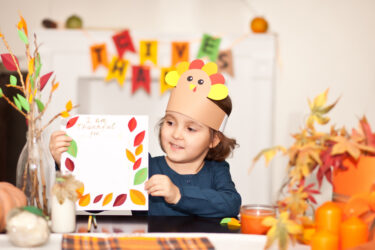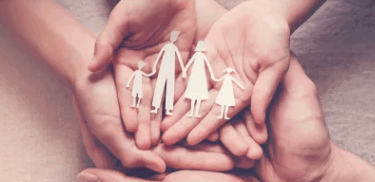Learn how to make your home a safe haven for Baby with these tips from the National Safe Kids Campaign and Safety 1st.
Yes, home is where the heart is, especially when there’s a new infant around, but many parents fail to recognize that homes can be dangerous places, too. In fact, nearly 4.5 million children younger than 14 are injured at home each year, and statistics like these make it crucial for parents to keep safety in mind when preparing the home for a new arrival. The suggestions that follow are from the National Safe Kids Campaign and Safety 1st and will help give your baby a safe and healthy start.
Crib and Mattress
One of the most potentially dangerous pieces of baby furniture is the crib. To help prevent crib injuries, the National Safe Kids Campaign recommends the following:
- Purchase a crib that has been certified to meet national safety standards, preferably one made within the last six years. Be sure it has a Juvenile Products Manufacturers Association (JPMA) certification label. Handing down a crib from one generation to another may carry sentimental value, but older cribs may not meet current safety standards.
- Choose a crib with no more than two-and-three-eighths inches of space between the slats or spindles. Be sure there are no missing or loose slats or spindles where the baby’s head can get caught.
- Be sure the side latches work properly to assure the baby cannot open them.
- Always keep the side rail locked in its top position when the baby is in the crib.
- Use bumper pads to keep the baby from hitting against the side of the crib. Secure the pads with snaps or at least six straps, an inch or less in width, tied securely on the outside of the crib, away from the baby. When the baby can pull up or stand, remove bumper pads, toys and other objects that can be used to climb out of the crib.
- Do not use a crib that has corner post extensions or protrusions greater than one-sixteenth inch, including decorative knobs. Infant clothing can get caught.
- Never use pillows in cribs, and eliminate soft bedding and any plastic materials in or around the crib.
- Do not place the crib near radiators, heating vents, windows, wall hangings, electric chords, window blind strings, drapery cords or other hanging strings.
- Always place babies on their backs when putting them to sleep, as this is proven to reduce the risk of Sudden Infant Death Syndrome (SIDS).
- Mattresses must fit snugly against all four sides of the crib. A baby can suffocate if his head is trapped between the mattress and the crib. If you can fit more than two fingers between the edge of the mattress and the crib, then the mattress is too small. Check regularly to ensure that all four mattress support hangers are securely held in hooks attached to the corner posts.
- The mattress should be at least 26 inches below the top rails of the drop side.
Crib Toys and Mobiles
Bright and cheerful crib toys provide entertainment for newborns. Keep in mind, however, that some of these items – crib gyms that stretch across the crib with suspended toys, music boxes and mirrors – can be dangerous.
- Avoid strings longer than six inches on any product for your baby, including pacifiers and rattles.
- Beware of toys and mobiles with small detachable parts that can be easily removed and swallowed.
- Remove all toys from the crib when your child is asleep.
- Remove mobiles and other hanging toys as soon as your child can push up on his hands and knees.
Dressers, Chests and Changing Tables
Whatever type of furniture you plan to use in your nursery, keep the following in mind:
- Use corner padding on sharp edges, or eliminate sharp furniture altogether.
- Use a changing table with safety straps to secure your baby. Never leave your child unattended on a changing table, not even for a second.
- Furniture, even large dressers, can tip easily. Mobile children can use lower drawers as steps to get higher, causing the furniture to fall on them. Secure it to a wall to prevent tipping.
- Consider using large plastic bins or open bookshelves for storage. These pieces of furniture are often safer than chests or dressers with large or heavy drawers without safety latches.
- Use toy chests without lids or chests with safety hinges that prevent lids from dropping to a fully closed position.
Living Room, Play Areas and Stairways
Relax and enjoy your family in a safe environment by implementing these helpful tips:
- Guard brick areas around fireplaces with safety padding, and keep fire wood, matches and other fireplace accessories out of reach.
- Cover all electrical outlets with outlet covers.
- Tie back long strings on window blinds or drapes and keep electrical cords looped and out of reach.
- Little fingers and toys can get stuck and broken in VCRs and DVD players. Try to keep them out of reach or covered.
- Use baby gates at the top and bottom of stairs. It is best to use the hardware-mounted kind as opposed to the pressure-fitted kind at the top of the stairs because they are more secure for holding a child’s weight.
- Lock any closet containing dangerous items.
- Cover any household slats wider than 2 3/8 inches (found in balconies or stairways) with a shield to prevent falls.
- Certain plants can be poisonous. Be sure to know what plants you have and keep poisonous plants out of reach, or not at all.
- Eliminate toys with small pieces. Also, batteries are poisonous. Make sure all battery covers are securely fastened.
Miscellaneous
Every area of your home may contain hazards. Read on for more baby proofing ideas.
- Store laundry detergent out of Baby’s reach.
- Home offices are loaded with potential dangers like filing cabinets, staplers, paper clips, cords and more. Keep office doors closed and locked and make sure potential hazards are out of reach or concealed.
- Install smoke alarms on every level of the home and outside each sleeping area. If you use gas in your home, a carbon monoxide detector should also be installed. Batteries should be tested regularly and replaced bi-annually when clocks are moved forward or back.
- If you have a deck, make sure boards are sanded down to prevent splinters.
- All pools should be gated. Kiddy pools and hot tubs should be drained or covered when not in use.
- Basements can be hazardous locations, particularly the stairs. Make sure baby gates are installed.
Walls and Floors
If you live in a house or apartment built before 1978, a lead abatement professional should check all painted walls for lead. Inhaling lead dust or swallowing something with lead in it can cause lead poisoning, which can lead to learning disabilities, hyperactivity and other neurological problems.
Any lead paint detected in your home should be completely removed or covered with an approved sealant. The walls can then be covered with water resistant wallpaper or repainted with latex, plastic-based or enamel paint.
Smooth, washable floors are best in nurseries because they are easier to keep clean. If you choose wall-to-wall carpeting, select a flat design in a synthetic fiber such as nylon. If you use area rugs, be sure they have non-skid backings.
One of the best ways to child proof your home is to get down on your hands and knees in each room and crawl around so that you can see potential dangers from a baby’s eye level. Do this regularly to find choking hazards like buttons, coins, plant leaves, etc. With careful thought and planning, you can help reduce your newborn’s risk of injury as he grows.
Information provided by the National Safe Kids Campaign and Safety 1st. Learn more at safety1st.com or safekids.org.




